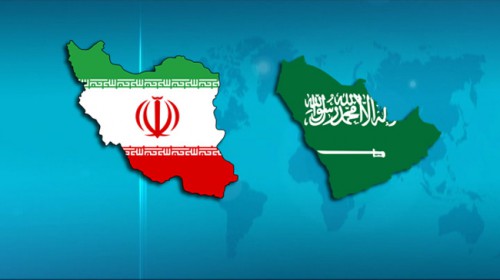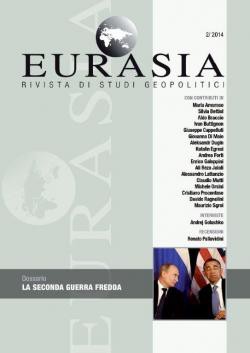Ex: http://paginatransversal.wordpress.com
El secretario general de Hezbolá, Sayyed Hassan Nasralá, ha asegurado que los norteamericanos están detrás de la creación de grupos terroristas en la región con el fin de dividir y destrozar a los países árabes y realizar su proyecto último, un proyecto que no ha podido ser implementado por las ofensivas israelíes.
En una alocución televisada de casi dos horas pronunciada este viernes en la cadena de televisión libanesa Al Manar con ocasión del aniversario de la victoria de la Guerra de Julio de 2006, Sayyed Nasralá puso en guardia contra minimizar el peligro de los takfiris que quieren eliminar a todo el mundo, comenzando por los sunníes.
Según él, la victoria sobre los grupos terroristas es posible a condición de que sea puesta en práctica una política nacional y se comprenda que se trata de un peligro existencial. Él puso también en guardia en contra de elegir opciones que no llevan a ninguna parte en la lucha contra el grupo takfiri Estado Islámico (EI).
He aquí las ideas principales del discurso de Sayyed Nasralá:
Mucho ha sido dicho sobre la Guerra de Julio. Libros e informes han sido escritos tanto por el enemigo como por los amigos para extraer conclusiones. Esa guerra fue más que un simple conflicto; fue una verdadera batalla de dimensiones históricas. Condolezza Rice (entonces secretaria de Estado de EEUU) habló de un nuevo Oriente Medio. Así pues, fue una guerra regional e incluso internacional. Expertos norteamericanos dijeron entonces que la guerra de Julio era un episodio en la eliminación definitiva de la Resistencia en el Líbano. No se buscaba el desarme de esta resistencia, sino aplastarla y acabar con ella.
Ellos elaboraron un plan para liquidar a los dirigentes de la Resistencia y prepararon colonias en el norte de Palestina para detener allí a miles de combatientes.
Proyecto de dominación estadounidense
Este proyecto fue elaborado después de la ocupación estadounidense de Iraq. George W. Bush y su administración querían decapitar la resistencia en el Líbano y en Palestina y acabar con el régimen de Siria antes incluso de 2006. Él quería presentarse al público estadounidense como el presidente que venció al terrorismo internacional para ser reelegido. Y después de alcanzados estos logros, la administración norteamericana contaba con desencadenar una guerra contra Irán.
El primer objetivo de EEUU es el de controlar todas las reservas de petróleo y gas en la región.
El segundo objetivo es liquidar la causa palestina. Israel estaba a cargo de eliminar la resistencia en el Líbano y Palestina. Sin embargo, la tenacidad legendaria de la resistencia en el Líbano saboteó este proyecto.
Los combates sobre el terreno obligaron a Israel a reclamar un cese el fuego, como fue el caso más reciente de Gaza. Los dirigentes árabes que participan en negociaciones en Nueva York confirman que la tenacidad de la resistencia, del pueblo libanés y de la política oficial libanesa llevaron a la comunidad internacional a poner fin a la agresión israelí.
El fracaso de los objetivos de la Guerra de Julio
¿Cuáles fueron los resultados de la guerra de 2006?
1 – Las capacidades de la resistencia se reforzaron.
2 – La guerra no golpeó a Siria en aquel momento.
3 – La guerra contra Gaza fue atrasada para después de 2006.
4 – La resistencia en Iraq contra la ocupación estadounidense se reforzó.
5 – El fracaso de los neoconservadores en las elecciones estadounidenses.
Cambio de táctica estadounidense
Sin embargo, la política belicosa estadounidense en la región continúa en vigor. Si los norteamericanos fracasan en conseguir sus objetivos cambian de política y de táctica.
Es, pues, necesario evocar la importancia de este éxito político, histórico, moral y humanitario conseguido por la Resistencia en el Líbano en 2006 y asegurar que somos capaces de hacer fracasar todo proyecto y todo complot contra nuestra región.
Después de 2001, los norteamericanos estaban en el apogeo de su fuerza. En contraposición, el mundo soviético y el mundo árabe estaban muy debilitados. Sin embargo, en el Líbano, Palestina, Iraq y Siria los grupos de la resistencia abortaron los proyectos estadounidenses y serán siempre capaces de hacerlo.
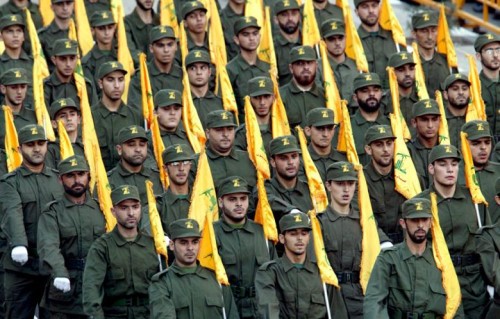
Hoy en día, lo que pasa en Gaza ha llevado a la región árabe a una nueva situación. Una nueva estrategia está siendo seguida por los enemigos para alcanzar sus objetivos. Su nueva vía es la de imponer un proceso de paz a los palestinos.
En el pasado, los norteamericanos llevaron a cabo guerras contra Iraq y pusieron la mano sobre el Golfo y los israelíes lanzaron ofensivas contra los países fronterizos.
La estrategia de la destrucción de los países
Dos factores son utilizados en la nueva estrategia adoptada por los estadounidenses.
Esta nueva estrategia es más difícil y peligrosa que la anterior. Ya no es cuestión de derribar a un régimen y colocar otro. Esta nueva vía norteamericana e israelí consiste en destruir países y ejércitos. El enemigo busca diseñar un nuevo mapa en la región sobre las ruinas de los países, de los pueblos y de las sociedades de la región.
Ellos quieren lograr su objetivo sembrando el terror y la confusión y destruyendo los tejidos sociales de las poblaciones.
El enemigo busca ahora ablandarnos para que pidamos una solución. Frente a las nuevas condiciones difíciles, EEUU se convertiría así a los ojos de los pueblos en el salvador último de la región.
La corriente takfiri, representada especialmente por el Estado Islámico, es utilizada en este sentido.
Vencer al EI es posible
¿Podemos derrotar a esta nueva estrategia? Sí. Yo digo a todos los pueblos de la región que somos capaces de abortar esta nueva estrategia, como hicimos con la anterior.
Debemos comprender que existe una amenaza existencial contra todos nosotros y cuales son sus dimensiones. No debemos minimizar el peligro que nos acecha y debemos preparar los medios necesarios para hacerle frente. No hay, sin embargo, que exagerar esta amenaza.
Debemos buscar medios reales y serios para luchar contra ella sin recurrir a opciones que han demostrado ya ser ineficaces. Debemos elaborar un plan adecuado y seguirlo.
Desde 1948 hemos conocido una experiencia dura a través del proyecto de expansión sionista. Cuando los israelíes comenzaron a buscar a familias judías para crear un estado sionista en Palestina, muchos árabes minimizaron el alcance de esta medida sionista. Desde el principio, estas familias fueron repartidas de forma que cumplieran funciones militares y de seguridad. Nada era casual. La mayoría de los árabes no prestaban atención a lo que pasaba. Y de este modo, fue establecida la entidad sionista.
Incluso en 1967, algunos árabes desmentían que Israel tuviera proyectos expansionistas. Hoy en día, Israel se ha convertido en un estado usurpador, expansionista, hegemonista y que lanza guerras y ofensivas para a continuación reclamar un cese el fuego de la comunidad internacional.
Algunos árabes han apostado siempre por una intervención internacional a la espera de una política árabe. Han esperado varias décadas y ninguna solución ha sido hallada.
De este modo, el hecho de apostar por la comunidad internacional no ha llevado a ninguna parte.
Sólo la lucha armada ha demostrado ser la buena opción. Después de que el pueblo palestino fue expulsado de su tierra, hizo falta que los pueblos árabes se movilizaran, formaran brigadas y comenzaran la lucha contra el ocupante.
Los movimientos de resistencia en el Líbano y Palestina han logrado avances y las victorias frente al enemigo. A pesar de todos los sacrificios, los palestinos han comprendido que la resistencia es la mejor opción para sabotear el proyecto sionista.
En la actualidad, debemos buscar los medios de afrontar un peligro real que nos amenaza a todos. Hoy en día, la organización del EI ocupa grandes partes de Iraq y Siria. Este grupo se ha convertido en todo un país que controla recursos petrolíferos y presas. Posee enormes cantidades de armas y munciones. Vende petróleo y mantiene relaciones comerciales con varios países.
El EI ha cometido masacres, asesinado a prisioneros, liquidado a personas inocentes y se ha enfrentado con otros grupos armados en Alepo, Idleb y Deir Ezzor.
En Iraq, el EI mata también a todo aquel que difiere con él en el plano político o religioso. El objetivo es sembrar el terror. Masacres fueron cometidas desde el principio por el EI contra los sunníes que son a sus ojos apóstatas. En la última guerra contra los kurdos, casi un millón de sunníes han sido desplazados. El EI no respeta a nadie. Mata a árabes, kurdos, turkmenos… Destruye mezquitas, iglesias, santuarios. Este comportamiento no tiene nada que ver con el Islam.
Apoyo exterior al EI
Algunos países árabes y occidentales han apoyado al EI. Los norteamericanos han abierto la puerta a esta organización. Llamo a todos los libaneses, sirios, palestinos y árabes del Golfo a dejar de lado sus cálculos personales y a pensar en que este peligro amenaza a todos: sunníes, shiíes, drusos, cristianos, yazidis y otros.
Que nadie pretenda que se trata de una guerra confesional en la región. Es la guerra del espíritu takfiri contra el Otro. El EI busca eliminar y matar a todo el mundo, filmando además sus masacres para sembrar el máximo de terror entre las poblaciones. Hay que tener en cuenta que una buena parte de la causa del avance del EI es mediática.
Combatir al EI
¿Qué hacer pues? ¿Cómo reaccionar? ¿Vamos a pedir ayuda extranjera? Cabe recordar, en este sentido, que cuando el EI invadió la ciudad de Mosul y las provincias de Nínive, Salahuddin y Diyala la comunidad internacional y la Administración estadounidense no reaccionaron.
Los cristianos del Líbano deben saber que en caso de amenaza para ellos, EEUU hará lo mismo que Francia con los cristianos de Iraq. Francia ha abierto sus puertas a los refugiados cristianos.
Fue sólo cuando el EI llegó a las puertas de Erbil, de este Kurdistán que significa mucho para los norteamericanos y los israelíes, que la comunidad internacional se movilizó.
¿Esperáis una acción de éstos? ¿O bien de la Liga Árabe? ¿Esperáis una unanimidad nacional para hacer frente a este peligro?

Los pueblos de la región están interesados en la lucha contra el EI. Nosotros, en tanto que libaneses, debemos admitir que esta amenaza es inminente. De un día a otro, la situación en Iraq ha cambiado. El EI es una amenaza para Iraq y Siria, pero también es un peligro para todos los demás países de la región.
La retirada de Hezbolá: un pretexto ilógico
Algunos afirman que la solución a esta amenaza reside en la retirada de Hezbolá de Siria. ¿Acaso la amenaza del EI será eliminada si Hezbolá se retira de Siria? Este debate no lleva a ninguna parte. Es toda la región la que está en peligro.
La responsabilidad nacional de movilizarnos y proteger las regiones libanesas nos incumbe a todos.
Despliegue de la FINUL: una propuesta incoherente
Otros proponen la ampliación de la Resolución de la ONU 1701. Sin embargo, esto es una burla. Sabed que la FINUL tiene necesidad de la protección de la población. ¿Son ellos capaces de protegernos?
Son la Resistencia y el Ejército los que protegen el Sur del Líbano. ¿Cómo creer, pues, que las fuerzas de la ONU son capaces de asegurar la protección de la Bekaa y el norte del Líbano?
El distanciamiento, una política errónea
Otros han planteado la política de distanciamiento del Líbano. Si el EI llega a la frontera del país ¿Acaso estaremos al abrigo de sus ataques a causa de la política de distanciamiento? Se conspira contra el Ejército libanés y las autoridades libanesas rehúsan hablar con las autoridades sirias. Justo porque se aplica esta política.
La lógica es que cuando un peligro existencial amenaza un país o una entidad, la proridad es entonces la lucha contra ese peligro y no exponer al pueblo a un genocidio.
Llamamiento a los libaneses
Llamo a todos los libaneses a comprender que vuestro país hace frente a una amenaza existencial. Para hacer frente a la misma hace falta dar prueba de seriedad, fidelidad y sacrificio.
He aquí algunos puntos fuertes para hacer frente a este peligro:
1 – El Ejército y las fuerzas de seguridad. Hezbolá saluda toda ayuda y oferta de ayuda al Ejército. Un apoyo popular, moral y financiero es necesario para fortalecerlo. El Estado debe ponerse al lado del Ejército para recuperar a nuestros soldados secuestrados.
2 – El gobierno actual es la única institución activa hoy. Este gobierno es uno de los factores de fuerza.
3 – Es necesario detener las provocaciones confesionales, como en el caso de Ersal. Cesad los ataques contra Hezbolá por el tema de Ersal. Los que llevan a cabo provocaciones confesionales en el Líbano deben ser juzgados porque es su efecto es el mismo que el de los coches bomba.
4 – Reconciliaciones regionales. La población de Ersal no tiene nada que ver con el Frente al Nusra o el EI. La población de Ersal, Labweh y Nabi Uzman deben reconciliarse.
5 – El tratamiento del tema de los desplazados sirios. El Líbano y Siria deben tratar el tema de los refugiados sirios y su regreso a su país. En Siria hay muchas regiones a las que los desplazados pueden regresar.
6 – Ambos países deben tratar el tema del fortalecimiento de la frontera común.
7 – La elección presidencial es importante porque el nombramiento de un presidente y la reactivación de las instituciones del Estado refuerzan al Líbano. El campo del 8 de Marzo posee un candidato y uno solo. Cesad de perder el tiempo. Que nadie espere una decisión exterior en el tema del presidente libanés.
He aquí una lista de ideas propuestas para proteger al Líbano. Vamos a debatirlas. Estamos dispuestos a sacrificarnos por nuestro país. Es una batalla existencial y estamos dispuestos a afrontarla. Si la resistencia hubiera esperado a una unanimidad nacional para actuar, Israel habría llegado hasta el norte del Líbano.
Es fácil vencer al EI. El combate contra Israel es más difícil. Somos capaces de hacerle frente con éxito. Este grupo no tiene futuro en la región si los iraquíes, los sirios, los libaneses y otros asumen su responsabilidad.
Con ocasión de la victoria de Julio, llamo a una posición nacional, institucional y popular. Sabed que tenemos los medios para lograr una victoria sobre el EI.
Cabe señalar que si todo el mundo rehúsa hacer frente a sus responsabilidades, Hezbolá asumirá las suyas. Estamos dispuestos a cooperar con todas las fuerzas libanesas que estén dispuestos a hacer frente a esta amenaza.
Nosotros no pensamos hacer las maletas y abandonar el Líbano. Es aquí donde hemos nacido y cuando las circunstancias nos llaman al combate, estamos dispuestos a luchar. Y sólo en ese caso saldremos victoriosos.
Fuente: Al-Manar
Extraído de: Tribulaciones Metapolíticas





 del.icio.us
del.icio.us
 Digg
Digg



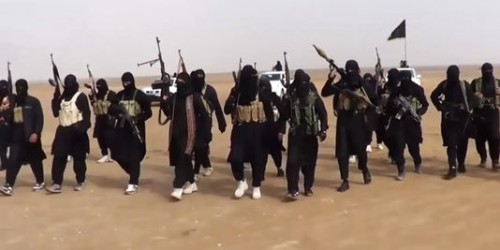


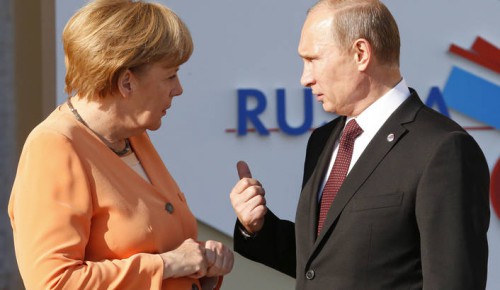

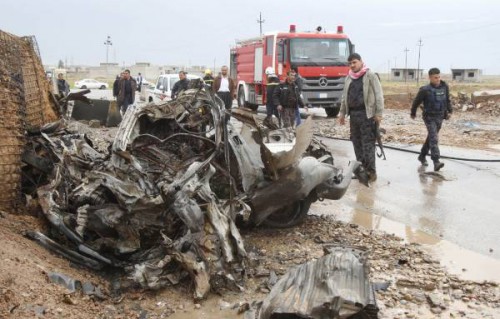
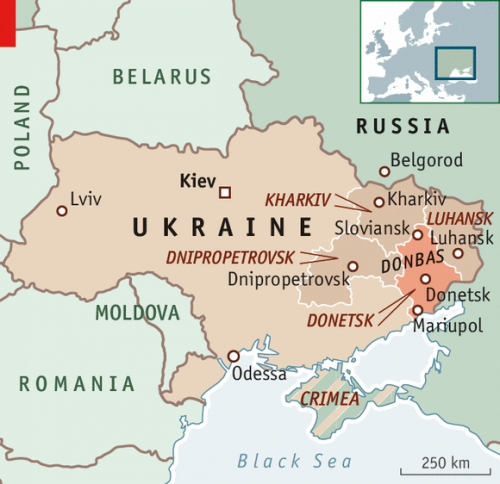
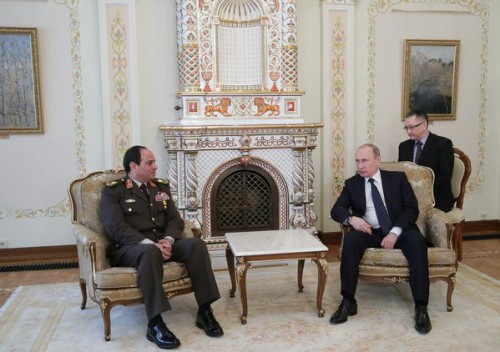
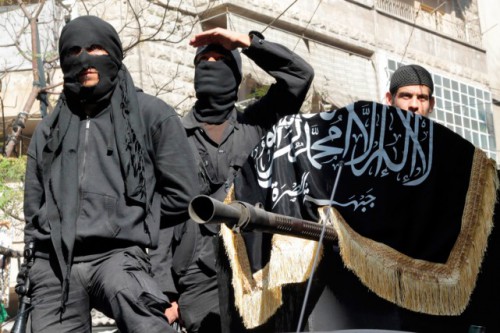


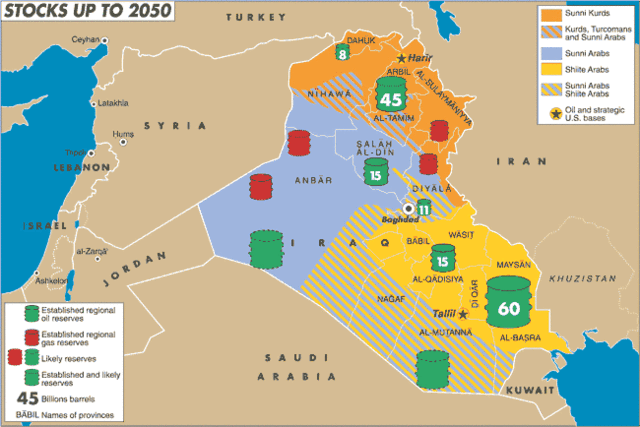

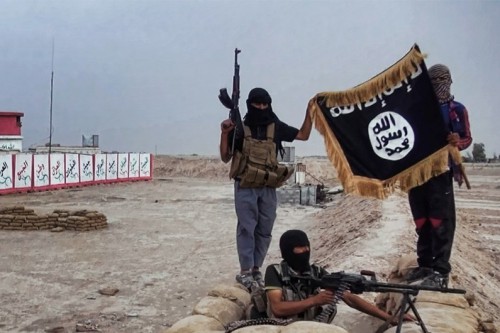

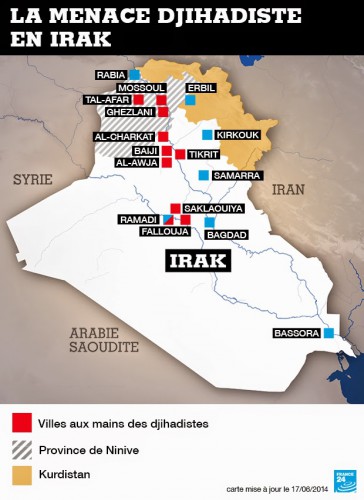

 „Mit diesem imposanten Werk liegt eine überzeugende Neuinterpretation des Wirkens von Karl Haushofer vor: Der globale Ansatz seiner Theorien wird durch die Fokussierung auf Japan und die dortige Rezeption von Haushofers Gedankenwelt erstmals deutlich herausgearbeitet. Haushofer wird überzeugend als theoretischer Wegbereiter nationalsozialistischer Eurasienpolitik beschrieben, der das Drehbuch zum ‚Dreimächtepakt’ verfasste, und mit seinen Werken in Japan sogar auf die Kriegsplanung einwirkte. Das ausgebreitete Detailwissen ist beeindruckend, die Interpretation neu und auch die sprachliche Umsetzung geglückt.“
„Mit diesem imposanten Werk liegt eine überzeugende Neuinterpretation des Wirkens von Karl Haushofer vor: Der globale Ansatz seiner Theorien wird durch die Fokussierung auf Japan und die dortige Rezeption von Haushofers Gedankenwelt erstmals deutlich herausgearbeitet. Haushofer wird überzeugend als theoretischer Wegbereiter nationalsozialistischer Eurasienpolitik beschrieben, der das Drehbuch zum ‚Dreimächtepakt’ verfasste, und mit seinen Werken in Japan sogar auf die Kriegsplanung einwirkte. Das ausgebreitete Detailwissen ist beeindruckend, die Interpretation neu und auch die sprachliche Umsetzung geglückt.“


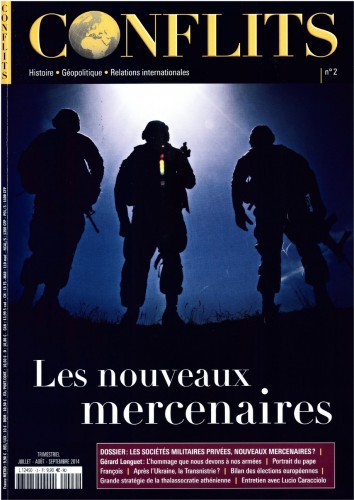 Breizh-info.com :
Breizh-info.com : 
